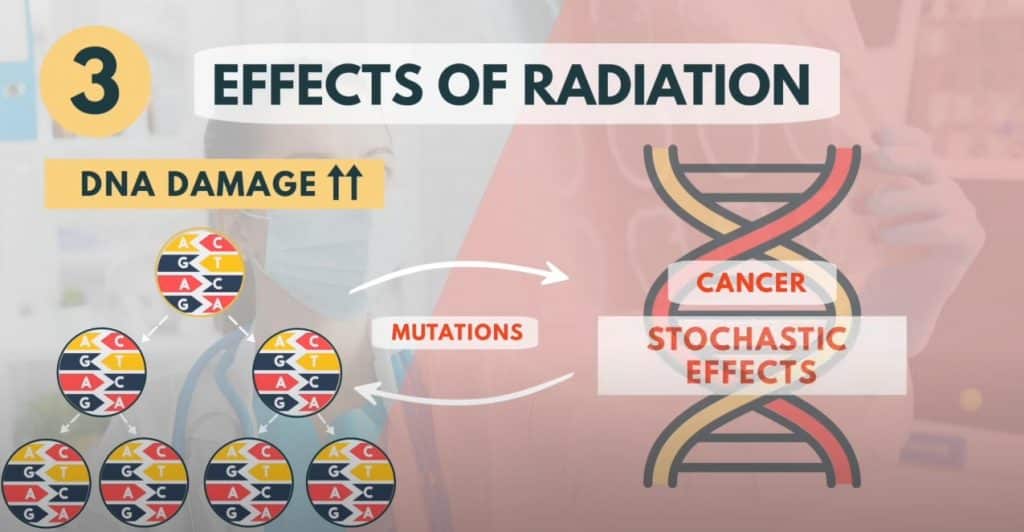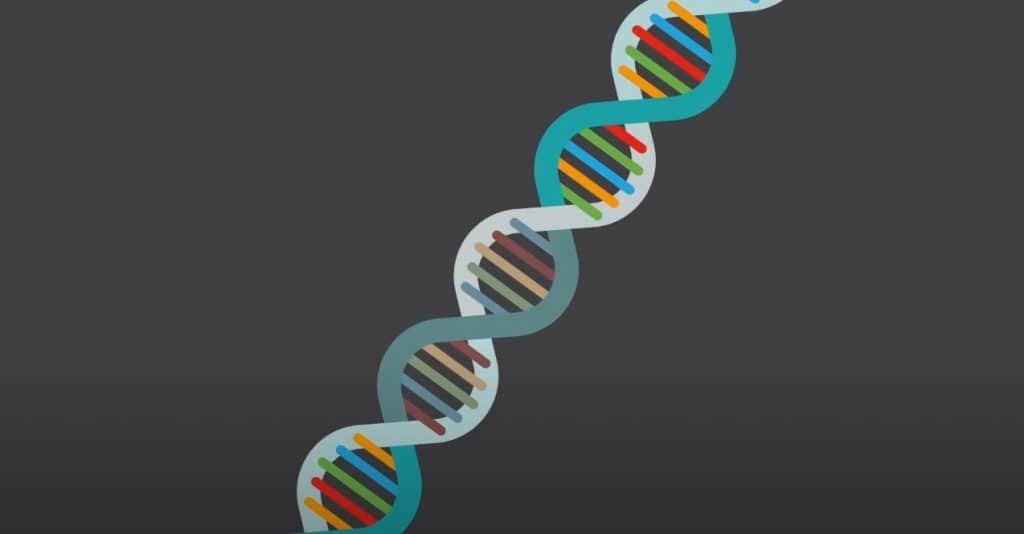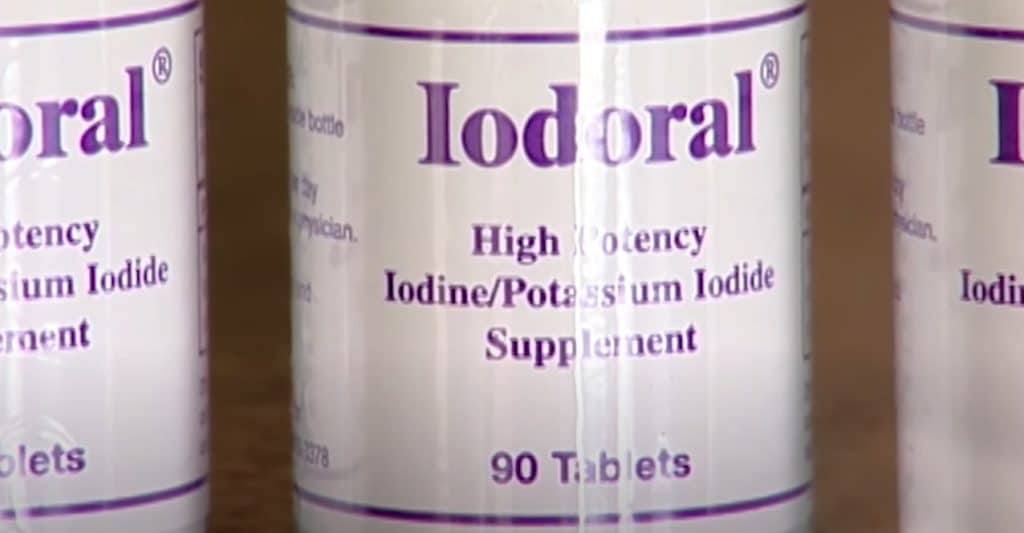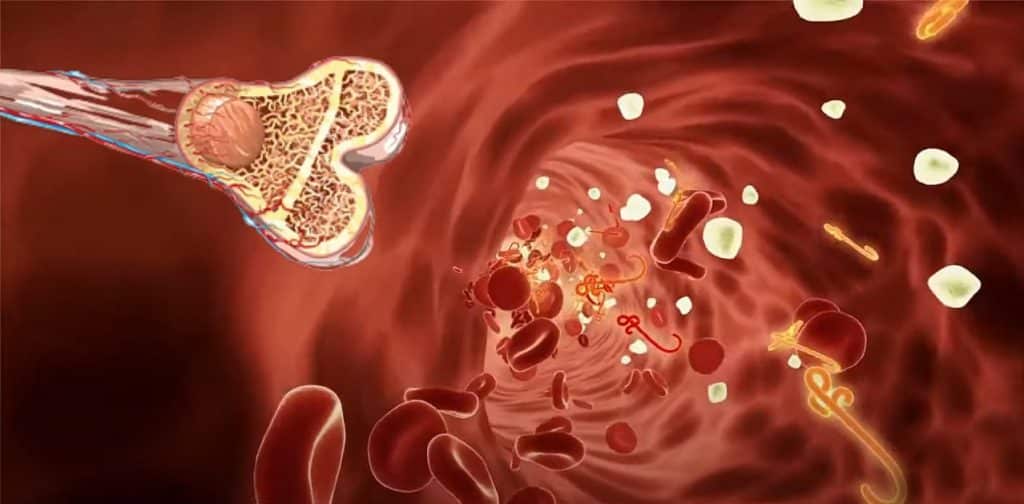Introduction

In such cases, your radiation exposure could cause you to obtain an Acute Radiation Syndrome that can lead to some serious health problems. Acute Radiation Syndrome appears when your body gets exposed to high doses of radiation that can get inside of you and cause some changes in the functionality of your organs.
Please note that this Radiation Syndrome can act unfairly and appear not only during the first minutes of your radiation exposure but during the next few days or even months!
The level of dangerousness depends on many different things, such as the types of radioactive materials that were exploded, how much time did you spend in the area of radiation exposure, and how much radiation itself did you experience.
In addition, there are some conditions that will not have an effect on you right away but would develop over some serious amount of time: for example, you could even get cancer or some DNA mutations that would appear much later.

101 on Acute Radiation Syndrome (ARS)

The signs and symptoms determining radiation exposure levels could be divided into four stages:
- The first stage is called a prodromal one, in which we would observe the following signs and symptoms: severe nausea, vomiting, and diarrhea. These signs occur within the first few hours and days after an individual’s exposure to radioactive materials and can last up to a few days.
- The second stage is called a latent phase, and there is a reason for that naming, as it is exactly the latent phase in which a person might feel him or herself quite normal, i.e., without any signs and symptoms. This phase can last up to a few weeks and is a bit tricky one, as it does not indicate your recovery from the ionizing radiation: in fact, it might be the case that the normal tissues and cells lining the GI tract will be actually dying, but you will not feel a single thing.
- The third stage is a manifest illness stage and here we would observe typical symptoms of a syndrome that a person requires, and they can last up to several months. These types of syndromes that occur during a manifest illness phase will be discussed by us in the next part of our article.
- The name of the fourth stage depends on the amount of the radiation-induced and obtained by an individual, as it will determine whether or not the person is capable of completing the recovery with the help of radiation therapy, or, unfortunately, is going to die. In case of recovery, this radiation therapy stage can last up to two years.
ARS that occurs during the manifest illness stage is usually divided into three types, depending on the areas of your body that would obtain a certain radiation sickness:
- Bone marrow
- Gastrointestinal syndrome
- Neurovascular acute radiation sickness
Bone marrow syndrome usually occurs when an absorbed dose of radiation does not exceed 10 Gy, while neurovascular radiation sickness would need a more significant radiation exposure that is usually bigger than 50 Gy.
Early dose assessment is always the most accurate one and can help you to receive proper treatment in a quite short period of time, which will definitely be more efficient, remember that, as radiation accident preparedness will be something that could save your life!
-
Bone Marrow Syndrome
Bone marrow syndrome, as you could have understood from the paragraph above, is the mildest form of Acute Radiation sickness, and its survival rate will decrease when the absorbed dose of radiation exposure increases. From the name of this syndrome, you could have also understood the main place of infection, i.e. bone marrow.
The main reason for death cases happening because of bone marrow syndrome is the destruction of bone marrow cells that cause hemorrhages. To be able to escape this burden, professional therapy is needed, so that your injured stem cells could replicate once again.
-
Gastrointestinal Syndrome
The absorbed doses of individuals acquiring gastrointestinal syndrome are a bit higher in comparison with those that have some problems with their bone marrow stem cells and are usually equal to 10 Gy, however, more mild symptoms could occur with a lower amount of absorbed dose as well, i.e 6 Gy.
The survival rate under this syndrome is extremely low, as individuals that have obtained radiation exposure of such levels will most likely have problems both with their bone marrow and with their Gastrointestinal tract, which would cause irreversible changes inside the human body and would lead to different sorts of infections, dehydration, and even electrolyte imbalance.
Such radiation sickness would lead to an individual’s death within the next 2 weeks after receiving penetrating radiation exposure. Total body irradiation is also possible at this stage
-
Cardiovascular Radiation Sickness
The last type of ARS exposure is associated with radiation doses higher than 50 Gy, with some particular symptoms occurring somewhere near 20 Gy.
As the highest radiation doses occur under this syndrome, it is also logical that it will have a short period of the occurrence of the death, i.e. 3 days. The circulatory system is the main sufferer of cardiovascular radiation accidents, which means that it would usually cause the appearance of increased pressure in the cranial vault and the symptoms will occur during the next few hours.
101 on Cutaneous Radiation Syndrome

The cutaneous syndrome usually goes together with an Acute Radiation Syndrome (ARS), but it is also possible to receive a cutaneous one without an ARS, for example, under radiation accidents with beta-radiation or huge doses of X-rays.
So what happens when you get skin radiation burns? Inflammation or erythema are the most common signs and symptoms of a cutaneous syndrome, but your hair could also be damaged, which could lead to a complete hair loss. The latent period is also present under this syndrome, which is why you should not get deceived by it and still go and receive some radiation therapy, even if you have mild symptoms!
It is common for your skin to regenerate by itself, especially if you did not receive any type of ARS. But there is still a possibility of receiving very large skin doses that could lead to a radiation injury like a complete hair loss, damage to the glands, atrophy, or even an appearance of ulcers or necrosis of the parts of your skin that have been damaged by this large dose of radiation.
Common Myths About Radiation

-
Any Type of Radiation is Dangerous
No, it is not. We always think about radiation only in the form of big nuclear explosions, but actually, radiation surrounds us every single day of our lives, as it is present in UV rays, radio waves, microwaves, and so on. This dosage is not harmful to our bodies at all.
When mentioning radiation as something really serious and dangerous to our health, you would be talking about a specific type of radiation, called ionizing radiation. When this one happens, electrons inside the atoms are getting knocked off, which leads to some irreparable DNA changes inside not only humans but any other living species as well.
Under the scope of ionizing radiation falls quite a lot of different types of radiation, such as UV rays, X-rays, alpha, beta, and gamma rays.
So do not be afraid of radiation as the whole concept: it is a normal part of our lives that is quite natural in its unharmful form, which is why you should only worry about ionizing radiation.
-
Radioactive Materials can Glow
This myth is only partially true, as it is not the radioactive material that can glow by itself, but rather the fact that its use on certain other materials can produce some kind of shine.
Radium can in fact produce a glow when used on phosphor materials, but it will not be shiny by itself alone. In fact, radioactive material usually looks like a simple piece of metal.
-
Radioactive Materials can be Easily Exploded
This fact is entirely false, as it is actually very hard to turn such materials into nuclear bombs and it took quite a lot of scientists and their time to figure out how to make such a reaction.
What is more, uranium used in nuclear reactors and in nuclear bombs is not the same: in the first case, our materials contain only around 4 percent of dividable content, as the reactors need constant access to stable energy sources, while in the second case, 90 percent of the uranium mixture will be dividable so that it could give us fast chain reactions.
Radioactive material still should be transported carefully, not because of its high explosiveness, but because of the risk of a high dose exposure if something would go wrong.
-
X-Rays are Highly Dangerous
Let us start by indicating the maximum safe dosage that the person could receive during one year — 5,000 millirems. Such dosages are usually received by people that are working directly with nuclear reactors, and they are still living safe and healthy lives.
And now, let us discuss the dosage that a person receives from one medical examination via X-rays — 10 millirems. Do you see how low this amount is, even if you take a hundred different X-rays each year?
You have nothing to worry about when it comes to making X-rays examinations, as the risk and harm from not making them and getting tuberculosis will be much higher!
-
Radiation Creates X-Ray Vision for People
Unfortunately, no. No matter how much radiation induced you have experienced, the human eye is not capable of seeing through objects as X-rays do. The only reason why medical X-rays work is that they are put on specific X-ray-sensitive material that allows seeing what is needed.
In addition, your attempts to see some objects because of the radiation-induced would mean that high doses will be needed, but as we have already discussed, high doses of radiation will produce harmful signs and symptoms that could create serious health problems for your central nervous system, skin, bone marrow, and internal organs that might cause some deaths.
-
Radiation Induced by Nuclear Power Plants is Dangerous
Even living in a 50-mile radius away from some nuclear power plants, you would only receive about 0.01 millirems of additional radiation per year, which is much less than the amount received from a single medical X-ray!
Thus, we can conclude that there is absolutely no danger produced by nuclear power plants in their usual working conditions. What is more, radiation produced in these places is mostly absorbed by the steel of the plants, and the rest is placed in the territories surrounding them, which are never visited by people and lie far behind any of their usual movements.
-
Radiation Causes Mutations that Create Superpowers
However sad this would not be for comic book fans, radiation does not cause such mutations, and in fact, the doses about which we are talking would only lead to one outcome — damage to the central nervous system, internal organs of a person, and thus, death.
But this does not mean that severe radiation accidents cannot cause other radiation-induced DNA damage, because they can. It could also raise your cancer incidence risks, but fortunately, such mutations are not genetically reproduced, meaning that your children will not receive them.
What Radiation Disease Control Exists?

The treatment will be, of course, dose-dependent, but in any case of Acute Illness caused by large amounts of gamma radiation (or any other) that were inhaled and thus ingested, especially if we are talking about cases with repeated exposure, potassium iodide is the first thing that should be taken by a patient to block infiltration of radioiodine into the thyroid.
When talking about some central nervous system sickness that can be produced during radiation emergencies, there is not much that current medicine could do, and the treatment is usually symptomatic so as to relieve the person from unnecessary pains, lack of oxygen, or convulsions.
In the case of a gastro-intestinal syndrome, the treatment would also depend on the severity of the amounts of the acute exposure to radiation, whether or not the entire body was damaged, and so on. If your exposure is not as harsh as it could have been, you would usually be treated with some antiemetics, and, if possible, with oral bland feeding.
You would also need a lot of electrolytes, fluids, and plasma, and their concrete amount will be defined after making some measurements such as blood pressure and blood tests such as blood cell counts. This particular test is one of the most important ones: blood cell counts occur every 2-3 hours after the exposure and every 4-6 hours during the next two days.
As for the hematopoietic syndrome that usually leads to infections, anemia, and hemorrhoids, you would be most frequently treated with the help of antibiotics, blood, and platelet transfusions. With the last option, you should always be warned that such transfusions might make you intolerant to any future transfusions that could be in need because of your hematopoietic syndrome.
If radiation causes cancer or ulcers on your body, they should be immediately removed with the help of surgeons.
Radiation Prevention Takeaway

What is more, you should always remember that radiation can harm your entire body, which means that bone marrow transplantation will not save you if you have more than one syndrome.
To the current date, there is no effective treatment for sterility that can occur due to radiation sickness and any of its displays.
For more information on particular substances that can help you with preventing symptoms of the radiation syndromes, such as severe nausea or an electrolyte imbalance, please consult with your local doctor, as there is no point for us to name these substances without you knowing your case, how they could help you and how you should take them.
Frequently Asked Questions — FAQ
What are the 4 Stages of Acute Radiation Syndrome?
The four main stages of ARS, include the prodromal one, where the first symptoms of exposure would be observed (such as nausea, vomiting, and headaches); the latent period one, where we usually do not observe any symptoms, but it does not mean that the sickness was cured completely; the manifest illness one, where the symptoms of different acute syndrome occur; and the fourth one, which is either recovery or death.
How Long Can You Live With ARS?
This depends on the dosage that was received by you, so in the case of quite small ones, your chances will be quite high, as there would not be any irreparable damage to your organs and central nervous system and you could simply get away with your skin and intestines’ cleanings.
But in the case of higher doses, there are some surgeries that can be done, but they are still not 100% effective.
How Painful is Acute Radiation Syndrome?
In the case of small dosages, there will be some discomfort caused by constant vomiting, nausea, and headaches, but they will go away within a few hours after visiting a doctor and cleaning your body from radiation particles.
When talking about more serious damages, you could experience shortness of breath, internal bleeding, anemia, convulsions, blackouts, and so on, and these symptoms are definitely more dangerous and painful.
Can Radiation Syndrome be Cured?
And again, it all depends on the amount of damage that radiation has brought to you, because in some cases, medical intervention will, in fact, save your life and cure you of any symptoms, but in others, there is not much that could be done except providing you with any possible level of comfort.
How Quickly Can Radiation Kill you?
Doses higher than 10 Gy can kill you within the next few hours after the radiation exposure, while others, such as those equal to 4-5 Gy are capable of killing you within the next 60 days. Doses that are lower in their amount, somewhere around 1.5 Gy, are not that harmful and most probably will be cured.
However, you should almost remember that even low dosages are capable of developing cancer.
What Does Radiation Do to Your Skin?
Usually, your skin will become very dry and itchy, maybe even become more red, like if you got sunburned. It could also become a bit swollen, or even wet and infected.
What Would Happen if You Were Exposed to Radiation?
A high level of acute radiation exposure will cause some skin burns and ARS development, and depending on the dosage, multiple serious symptoms and diseases can develop. But any type of exposure will usually be followed by nausea, vomiting, headaches, and fatigue.
How Long Does Nuclear Radiation Stay in Your Body?
This depends on the amount that you undigested and the type of radioactive material that you received. For example, iodine will be completely gone from your system within a couple of months, while uranium will need much more time, approximately one or two years.
What is more, uranium is chemically quite similar to calcium, which is why some parts of it will definitely stick to your bones and will not be able to live in your body completely. And because high doses of radiation could be lethal or could develop cancer, you need to get rid of any particles as fast as you can.


